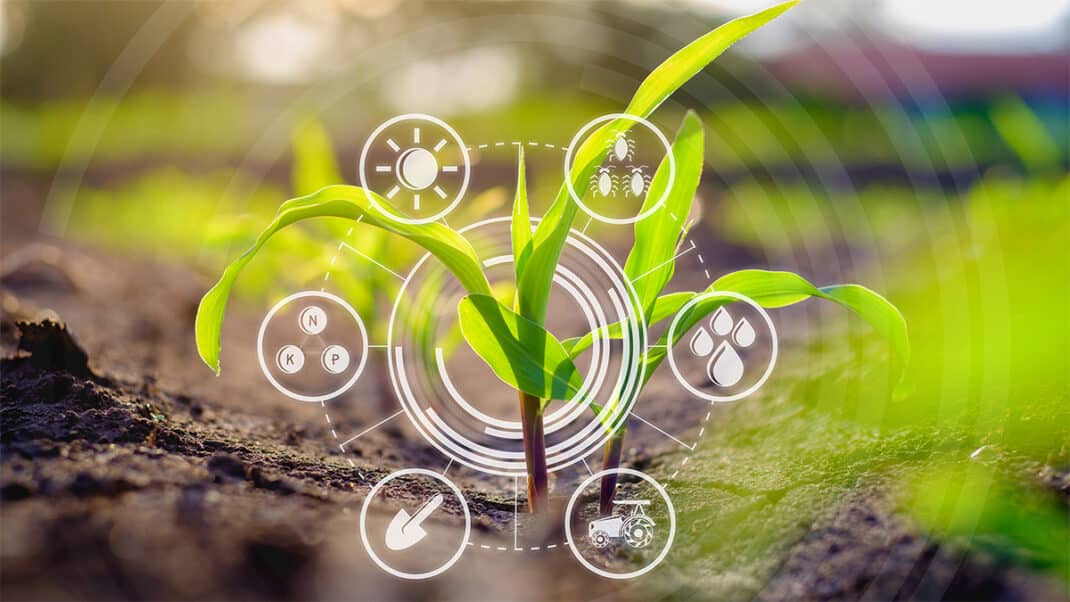Creating an Eco-Friendly Fitness Facility
Tips for making your facility lean and green.

These days it seems everyone is discussing “going green,” and many individuals are taking significant steps to make their homes eco-friendly. So can an entire fitness facility take strides toward developing a greener environment? The answer is yes. Incorporating environmentally responsible ideas into your daily operations not only benefits the ecosystem but also saves significant dollars in your annual budget. Such choices can produce a healthy atmosphere for members and employees while helping you gain a competitive advantage. Here’s how to get started.
Eco-Friendly Cleaning Supplies
Look at your cleaning supply closet. If the word danger, warning or hazardous appears on the label of a product or if the instructions require you to wear gloves or protective goggles when using the product, then it may be time to re-evaluate your choices.
The immense amount of cleaning required in a fitness environment demands gentler, more natural products, both for those who use them daily and for your members. Many traditional cleaning agents, particularly industrial-strength cleaners, contain toxic chemicals that are harmful to our health and pollute the environment. Green cleaning options help reduce toxins in your facility and keep members and employees healthier (Peavey 2008).
When purchasing cleaning products, look for items certified by EcoLogo™ or Green Seal™ to ensure that the products meet science-based environmental standards. Visit www.greenseal.org for a list of approved cleaning products, hand cleaners, floor care products and cleaning services.
Flooring
Flooring is one of the biggest design components for fitness centers in terms of cost and upkeep. The idea of green, eco-friendly fitness flooring is not necessarily new in the industry. For years, recycled or reused materials have been an option. Recycled or reused rubber flooring and carpets remain excellent choices. The theory behind these products is that they extend the life cycle of the resource because they are composed mainly or entirely of previously used, postconsumer material (Broadhag 2008).
In addition to recycled materials, consider newer flooring products. Flooring is now available that is created from rapidly renewable resources, such as bamboo and cork. Additionally, you can now purchase commercial-grade carpeting that is made from recycled material and is also low in volatile organic compounds. Another green concept is to shop for flooring from a source certified by the Forest Stewardship Council, which places a seal of approval on companies that adopt environmentally responsible forestry practices.
Regardless of the option you select, consider the source of the flooring product. Regional products that are grown and manufactured closer to your facility are considered green because they are not transported long distances and therefore cut down on gas usage and greenhouse gas production (Broadhag 2008). If you are deciding between comparable flooring options manufactured in different locations, simply selecting the manufacturer closer to your facility will benefit the environment.
Lighting and Water Usage
Lighting and water are perhaps two of the most utilized resources in any fitness center. Reducing your facility’s consumption of both is not only environmentally responsible, but also fiscally wise. Several options exist to cut costs on these items and conserve resources.
Your lighting expense can be decreased in ways that make for a healthier and more inviting environment. Install energy-efficient light bulbs wherever possible, as well as motion sensors in areas such as storage rooms and stairways so that lights are only on when needed. Additionally, a great way to lower the cost of electricity is to install large skylights throughout the facility. Natural light is healthier, more welcoming and free.
Moreover, one product on the market, the Solatube® Daylighting System, captures outdoor light in a dome installed on your roof and then projects it into your rooms. Ultraviolet (UV) protection is built into the Solatube system so that the sunlight filtered into the rooms has already been blocked from UV rays. The Solatube also uses recycled components in its construction (see www.solatube.com for more information).
In terms of reducing water usage, consider installing low-flow toilets and low-flow faucets in sinks and showers to save as much as 2.5 gallons of water per minute (Scanlin 2007). You can also conserve water by choosing landscaping that does not require significant watering, and save in energy costs by insulating all water pipes and heaters.
Eco-Friendly Equipment
There is no question that gym equipment places a significant burden on energy usage and budgeting costs. The good news is that conserving energy through eco-friendly equipment is easier today than it ever has been.
Precor® and Life Fitness are two companies currently producing climbers, cycles and ellipticals that require only your clients’ energy to power them. SportsArt Fitness also offers a treadmill with an ECO-POWR™ motor that uses 32% less energy than traditional treadmill motors (Scanlin 2007).
Another innovative product is the WaterRower (www.waterrower.com). This rowing machine requires no electricity and is constructed from purely replenishable hardwoods.
Heating and cooling equipment, laundry machines and dryers are also tremendous energy drains. When the time comes to replace any of these products, consider selecting ENERGY STAR-rated equipment, which can cut energy bills 10%-20% (Scanlin 2007).
Marketing Your Eco-Friendly Efforts
When you make eco-friendly changes in your facility, don’t keep them to yourself! Existing members as well as potential clients are concerned about their physical well-being and the environment. Letting them know through marketing that you are making every effort to ensure that they are exercising in a healthy atmosphere can go a long way in encouraging long-term retention.
So, to further benefit your business through your green efforts, take the time to publicize the environmentally responsible steps your facility is taking. Make your eco-friendly policy part of your pitch to potential new clients. Furthermore, issue a press release, post a notice on your bulletin board, send a mass e-mail or have an article written in your local newspaper about the changes your facility has made. In other words, let the community know you are making an honest commitment to creating a healthy environment for members and employees.
Fitness Organizations Going Green
Get inspiration from what a few fitness organizations are doing to implement eco-friendly strategies with positive results:
The Green Microgym in Portland, Oregon, is an excellent example of a facility fully committed to conserving energy and implementing environmentally friendly strategies. Much of the cardio equipment has been modified so that clients are generating electricity while working out. In addition, the gym uses solar panels, LCD televisions (which use less electricity than plasmas) and recycled paper products in the bathrooms.
Another unique example is OrganicAthlete, a global sports organization founded by a group of competitive athletes on a mission to promote healthy living and ecological responsibility. Members meet, train and compete with other athletes who want to make a positive influence on the world through their chosen physical activity. Visit www.organicathlete.org to see if there is a chapter in your community for your facility to partner with. If not, consider starting one.
See also: Green Fitness Facilities: Healthy Bodies, Healthy World
Making a Difference
“As fitness professionals, it is our responsibility to create a healthy environment for our clients,” says Kurt Broadhag, MS, CSCS, president of K. Allan Consulting and developer of the Think Green Fitness Foundation, a nonprofit organization responsible for promoting green practices within the fitness industry. “We must, however, also look at the broader picture and understand the role we play as health stewards outside the confines of the gym. We can only hope that by adopting green principles within the gym the ideology can be passed on to our members and adopted into their daily rituals, shaping the way for a sustainable future.”
Green Resources
Want to find ways to help your facility become more environmentally friendly? Check out these resources:
- The U.S. Green Building Council is a nonprofit community of leaders working to make green buildings available to everyone within a generation (www.usgbc.org).
- The Environmental Protection Agency is the U.S. leader in environmental science, research, education and assessment efforts (www.epa.gov).
- ENERGY STAR is a joint program of the U.S. Environmental Protection Agency and the U.S. Department of Energy. The program helps you save money and protect the environment through energy-efficient products and practices (www.energystar.gov).
- ReRev.com is a company specializing in retrofitting gym equipment to generate carbon-neutral energy in a safe manner by cost-effectively capturing the kinetic motion of aerobic exercise and converting it into clean energy that feeds back into the local utility’s power grid (www.rerev.com).
- KAVU® is a clothing company that designs eco-friendly fitness clothing for men and women. It uses natural fabrics such as bamboo, hemp, and cotton (www.kavu.com).
7 Quick Tips for Going Green
Here are some different techniques you can use to help your fitness facility become more eco-conscious:
- Offer only organic food products at your snack and juice bars.
- Sell organic clothing and eco-friendly fitness gear in your pro shop.
- Strategically place recycling bins throughout the facility for used water and sports drinks bottles.
- Reprogram televisions to automatically turn off when not in use.
- Use “graywater” (recycled bath and laundry water) for irrigation and flushing toilets.
- Program your thermostat. According to ENERGY STAR, in the colder months you should program your thermostat to less than 70 degrees Fahrenheit. In the warmer months, program your thermostat to higher than 78 degrees.
- When possible, buy supplies in bulk and request that no excess packaging be used.
References
Broadhag, K. 2008. Environmentally friendly gym design: green flooring. Fitness Business Pro (Oct. 9).
Peavey, H. 2008. It’s not easy flooring green. Fitness Management (May).
Scanlin, A. 2007. Fitness facilities go green. Fitness Management (Oct.).




